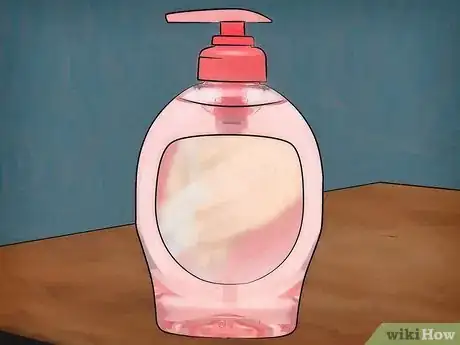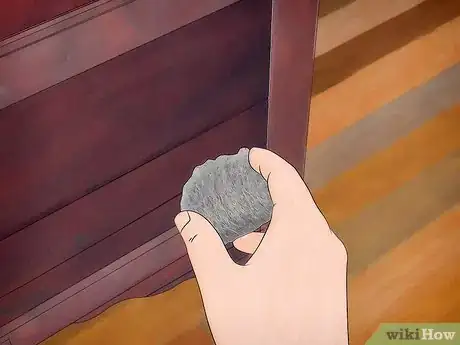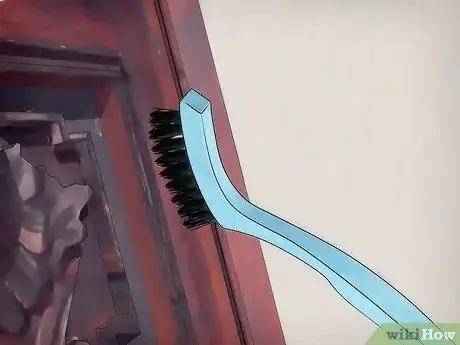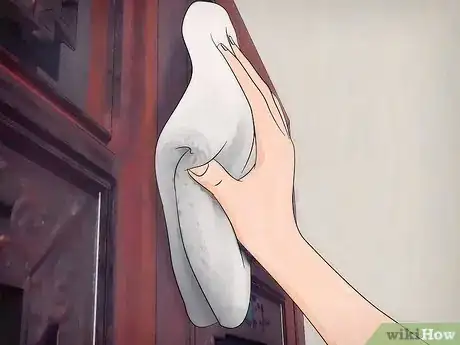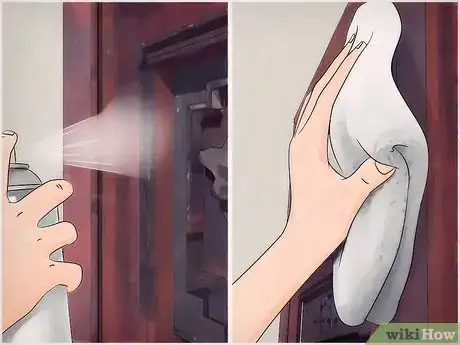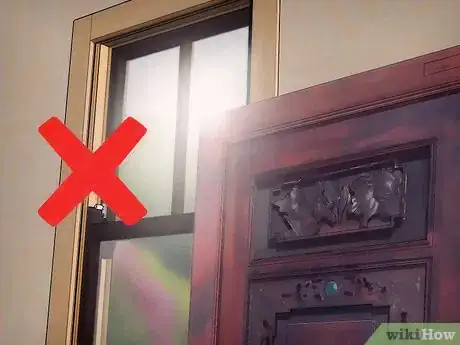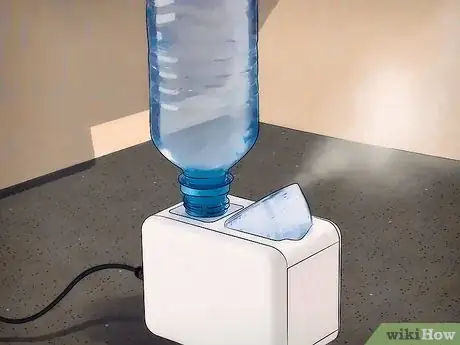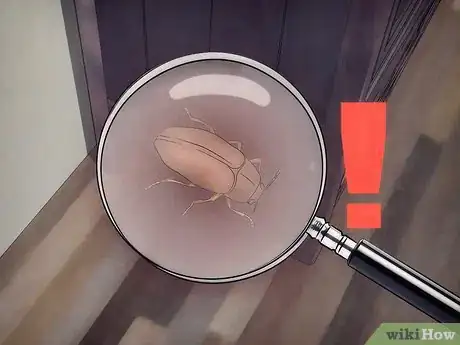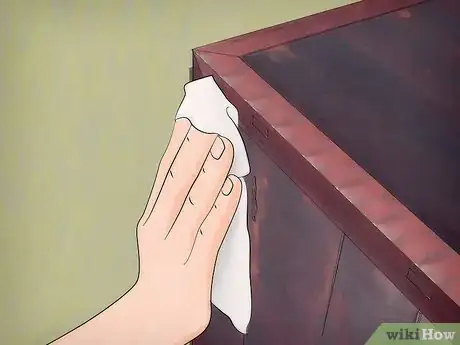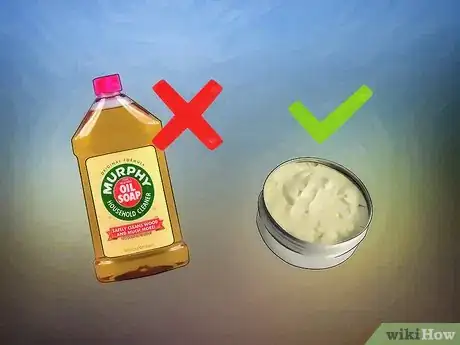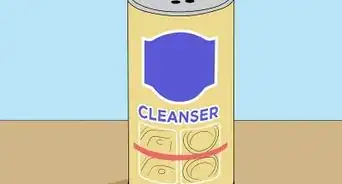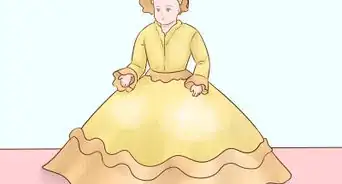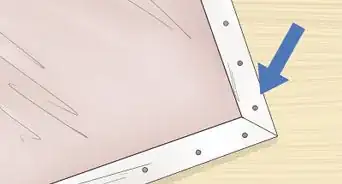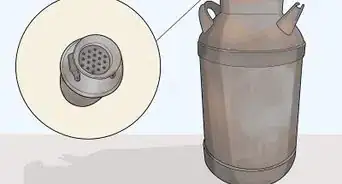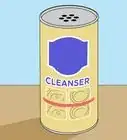This article was co-authored by Tanglewood Sue. Tanglewood Sue is a DIY and Upcycling Specialist and the Owner of Tanglewood Works out of Hyattsville, Maryland. With over nine years of experience, Sue specializes in upcycled painted furniture and other handmade, personalized, and sustainable goods. With her passion for art and reinvention, marketing experience, and Bachelor’s Degree in Broadcast Media, Sue has been able to create a business that not only provides quality pieces but empowers customers to create their works through her library of DIY tutorials and live demos as well as DIY supplies.
wikiHow marks an article as reader-approved once it receives enough positive feedback. In this case, 89% of readers who voted found the article helpful, earning it our reader-approved status.
This article has been viewed 297,776 times.
Valuable antique furniture will have a layer of grime on its surface from years of exposure to dust, dirt and fumes. If you want to clean up antique furniture, be gentle. You do not want to damage the furniture by using harsh chemical cleaners. Make sure to maintain the furniture after cleaning it by dusting and polishing it regularly.
Steps
Cleaning the Furniture
-
1Choose a mild cleaner. To start, choose a mild cleaner. As you want to keep antique furniture as damage-free as possible, harsh chemicals are a bad idea.[1] A mild dish soap diluted in water is a safe choice for most antiques. Use dish soap intended for hand washing dishes. Soap that you would use in a dishwasher is more acidic.[2]
- If dish soap is not successfully removing grime, it's okay to opt for a slightly stronger cleaner. Something like Murphy's Oil would work, but use only a small amount. You should not use an abundance of oily products on older furniture.[3]
- Some experts feel furniture paste wax, which you can find at most hardware stores or department stores, is a better option for cleaning antiques than oil.[4]
-
2Rub the surface down with a soft cloth and your chosen cleaner. To start, wet a rag with a light amount of your chosen cleaner. Gently rub down the surface of the furniture. Keep wiping the surface with the same rag until the rag no longer picks up new dirt or debris.[5]
- Avoid scrubbing, as this can damage the finish of old furniture. Use gentle wiping motions instead.[6]
- Move the rag in the direction of the grain of the wood.
Advertisement -
3Remove stuck on stains with steel wool. Some areas may have stuck on stains or grime. You can use steel wool to remove these stains as long as you use #0000 wool and work at the stains using gentle motions.[7]
- Rub in the direction of the wood grain. Keep rubbing until the unwanted dirt and debris is gone.
- Make sure not to use too much force. This can damage the finish.
-
4Use a toothbrush in hard-to-reach places. Some areas in the furniture, like corners or curves, may be hard to reach with a rag. For these areas, use a toothbrush. Dip a toothbrush in your cleaning solution. Following the grain, scrub down hard-to-reach areas until dirt and grime is gone.[8]
-
5Wipe down the furniture and allow it to dry. Once you're finished cleaning, you can wipe down the furniture with a dry rag. Use gentle motions to sop up most of the liquid until the furniture is relatively dry to the touch. Allow the furniture to air dry a bit before continuing with the cleaning process.[9]
-
6Polish the furniture when finished. Once the furniture is dry, add a layer of polish. This will make the finish glow and give the furniture a nice look. To polish, simply take a clean cloth and buff the furniture until it glows.[10] Furniture polishes, especially silicone-based polishes, are best avoided on antiques.[11]
Maintaining Antique Furniture
-
1Dust antique furniture regularly. To prevent the buildup of grime, dust your furniture regularly. When doing routine dusting in your home, take a rag and dust off any debris built up on antique furniture.
- If you're using dusting sprays, go for a mild spray or no spray at all on antiques.
-
2Keep antique furniture out of sunlight. UV light is very damaging to antiques. Therefore, it's a bad idea to allow your antiques to be exposed to sunlight.[12]
- Do not leave antiques outside, especially in shaded areas.
- Do not store antiques near a window, where they may be exposed to sunlight from outdoors.
-
3Use a humidifier in a dry environment. Antique furniture is affected by moisture in the air. Changes in humidity can cause wood to shrink and crack. Keep a humidifier in the room where you store your antiques. This will keep the humidity stable, minimizing the negative affects of changing in moisture in the air.[13]
-
4Remove antique furniture right away if you suspect a pest infestation. Antique furniture can be very valuable. Therefore, it's a bad idea to allow it to be exposed to pests. Certain types of bugs, like beetles, as well as rats and mice will chew through antique furniture. In the event you notice a pest infestation in your home, remove antique furniture right away. Store the furniture elsewhere until the infestation is resolved.[14]
- Check for any loose or damaged bits before moving antique furniture. You should not carry furniture holding areas that are wobbly or dislodged.
- Carry chairs by the seat rails. Carry tables by the apron or legs. Always carry furniture, especially large furniture, across the floor instead of dragging it.
Avoiding Pitfalls with Cleaning and Care
-
1Consult an antiques expert before attempting to restore or alter old furniture. If you have an antique that's pricey or a collector's item, do not attempt to restore it on your own. Talk to a local antiques dealer and ask for advice or tips. If you're not familiar with restoring furniture, you may want to hire a professional instead of attempting to restore an antique on your own.[15]
-
2Test your cleaner on a small portion of the furniture first. You want to make sure your chosen cleaner will not harm your antiques. Test a small amount on a tiny area of the furniture that is not easy to see, such as underneath the seat of a chair. Wait a few hours and check. If you do not notice any damage or discoloration to the furniture, this cleaner is probably safe to use.[16]
-
3
-
4Leave paint on furniture alone. It's common to notice old or chipping paint on antiques. Your first impulse may be to remove such discolorations. However, this is a bad idea and may negatively affect the value of your furniture.[19]
- Collectors usually want antiques as close to original as possible, including any chipped or stained paint. If you're intending to one day sell your antique furniture, you should especially avoid altering the paint.
Community Q&A
-
QuestionIs beeswax okay to use on an antique wooden carved table?
 Community AnswerSure! Beeswax has many anti-aging properties that help preserve the natural look of your antique.
Community AnswerSure! Beeswax has many anti-aging properties that help preserve the natural look of your antique. -
QuestionHow do I get rid of the smell of cigarette smoke from furniture?
 Community AnswerFebreeze works well. Use the kind in a plastic bottle with a trigger sprayer. I prefer the unscented. If the smell is inside drawers or cabinets, spray thoroughly, and leave them open for a few day to thoroughly dry and air out. If you can still smell it, a bowl of coffee beans or grounds shut inside a drawer or cabinet will also deodorize. I've used coffee to destroy a lot of bad smells in antiques, not just tobacco smoke. I've also used sliced apples to remove smoke smells from inside my cabinets after a kitchen fire. Set the slices in a glass or ceramic dish so the juice doesn't damage your wood. Close the doors and leave them for a few weeks.
Community AnswerFebreeze works well. Use the kind in a plastic bottle with a trigger sprayer. I prefer the unscented. If the smell is inside drawers or cabinets, spray thoroughly, and leave them open for a few day to thoroughly dry and air out. If you can still smell it, a bowl of coffee beans or grounds shut inside a drawer or cabinet will also deodorize. I've used coffee to destroy a lot of bad smells in antiques, not just tobacco smoke. I've also used sliced apples to remove smoke smells from inside my cabinets after a kitchen fire. Set the slices in a glass or ceramic dish so the juice doesn't damage your wood. Close the doors and leave them for a few weeks. -
QuestionI have a 200 year old antique cedar chest. How do I treat it?
 Community AnswerWash it with lukewarm water without soap. If you need soap, use it very diluted. Afterwards, dry with a cloth, and dust occasionally.
Community AnswerWash it with lukewarm water without soap. If you need soap, use it very diluted. Afterwards, dry with a cloth, and dust occasionally.
Warnings
- When using any harsh chemicals like paint thinner, do it in a well-ventilated room, wearing protective gloves and a face mask.⧼thumbs_response⧽
References
- ↑ Tanglewood Sue. DIY & Upcycling Specialist. Expert Interview. 24 March 2021
- ↑ http://www.refinishwizard.com/cleaning_antique_furniture.html
- ↑ http://www.apartmenttherapy.com/how-to-quickly-154404
- ↑ http://www.furniturecaretips.com/antique-furniture.htm
- ↑ http://www.apartmenttherapy.com/how-to-quickly-154404
- ↑ http://www.howtocleanstuff.net/how-to-remove-dirt-build-up-from-wooden-furniture/
- ↑ http://www.apartmenttherapy.com/how-to-quickly-154404
- ↑ http://www.howtocleanstuff.net/how-to-remove-dirt-build-up-from-wooden-furniture/
- ↑ http://www.howtocleanstuff.net/how-to-remove-dirt-build-up-from-wooden-furniture/
- ↑ http://www.howtocleanstuff.net/how-to-remove-dirt-build-up-from-wooden-furniture/
- ↑ http://www.furniturecaretips.com/antique-furniture.htm
- ↑ http://www.furniturecaretips.com/antique-furniture.htm
- ↑ http://www.furniturecaretips.com/antique-furniture.htm
- ↑ http://www.furniturecaretips.com/antique-furniture.htm
- ↑ http://www.howtocleanstuff.net/how-to-remove-dirt-build-up-from-wooden-furniture/
- ↑ http://www.howtocleanstuff.net/how-to-remove-dirt-build-up-from-wooden-furniture/
- ↑ http://www.howtocleanstuff.net/how-to-remove-dirt-build-up-from-wooden-furniture/
- ↑ http://www.pbs.org/wgbh/roadshow/tips/woodfinish.html
- ↑ http://www.pbs.org/wgbh/roadshow/tips/woodfinish.html
About This Article
If you need to clean a piece of antique furniture, opt for a mild cleaner, such as dish soap mixed with water, to avoid damaging the item. To start cleaning, gently wipe down the surfaces with a soft cloth and your cleaner. If you're trying to remove a stain, use fine steel wool and rub the area in the direction of the wood grain to avoid damage. Finish by using a toothbrush to clean corners that are hard to reach, then dry off your furniture with a dry rag. For advice on maintaining your antique furniture, including why you should dust it regularly and keep it out of sunlight, read on!
